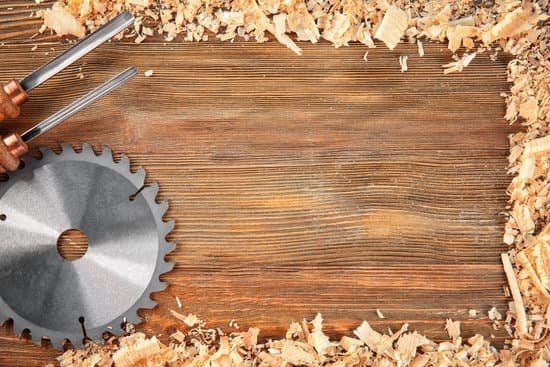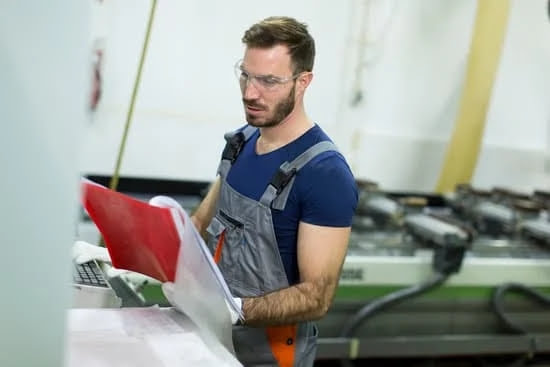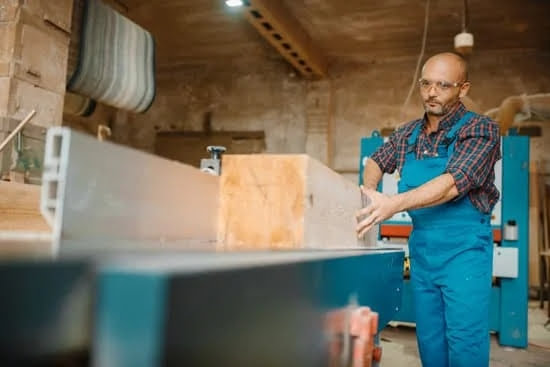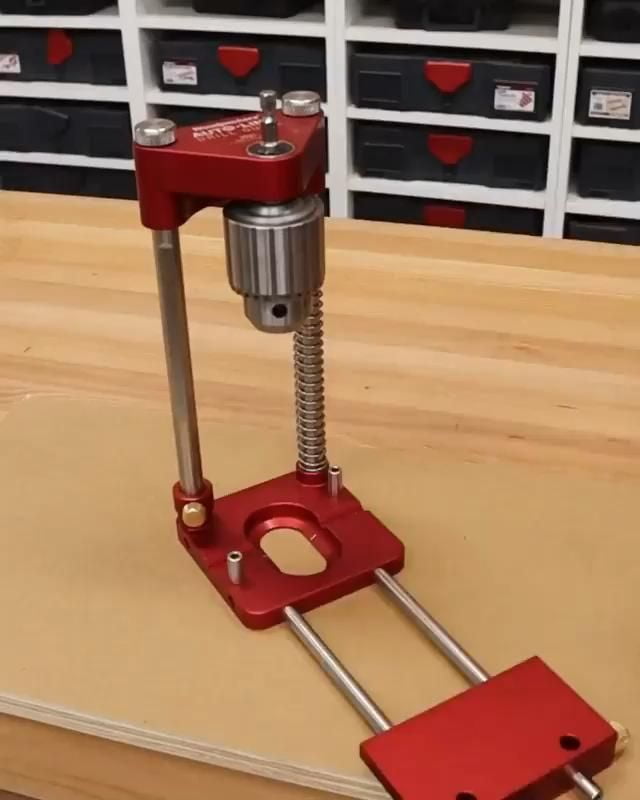Beginner woodworking can be a fulfilling and enjoyable hobby, but it’s important to start with the right tools. Whether you’re interested in crafting furniture, carving intricate designs, or simply want to learn the basics of woodworking, having the best beginner woodworking tools is essential. With the right tools at your disposal, you can achieve accurate cuts, smooth finishes, and enhance your overall woodworking experience.
When starting out in woodworking, having the necessary tools is crucial for success. Beginner woodworkers need a variety of hand tools to perform tasks such as shaping wood, making precise cuts, and creating intricate details. Additionally, power tools provide efficiency and precision when handling larger projects or working with harder materials.
While different projects may require specific tools tailored to their requirements, there are several must-have tools that every beginner should consider acquiring. From essential hand tools like chisels and coping saws to power tools like jigsaws and drills, these items are fundamental in any beginner’s woodworking toolkit.
By understanding the importance of having the right tools from the beginning, beginners can set themselves up for success in their woodworking journey. In the following sections of this article, we will delve into specific categories of beginner woodworking tools and explore their uses and benefits further.
From safety equipment to measuring tools and workbenches to accessories that enhance organization and efficiency, we will provide comprehensive guidance on building a well-equipped workshop for novice woodworkers. Whether you’re just starting out or looking to expand your collection of woodworking tools, this article will help you make informed decisions about what gear is essential for your skill level and goals.
Essential Hand Tools
Chisel Set
A chisel set is an essential hand tool for beginners in woodworking. Chisels are versatile tools that can be used for many tasks, such as shaping and carving wood, creating mortises and joints, and removing excess material. They come in various sizes to accommodate different woodworking projects. A chisel set typically includes a range of chisels with different blade widths, allowing beginners to work on a variety of projects with precision.
Coping Saw
A coping saw is another must-have hand tool for beginners. It is a versatile cutting tool that allows users to make intricate curved and straight cuts. The thin blade of the coping saw can easily navigate around tight corners and produce precise cuts in both hard and softwoods. This makes it suitable for tasks like cutting dovetail joints, shaping moldings, or removing waste material from inside curves.
Mallet
A mallet is an essential tool for driving chisels or other hand tools into wood without damaging them. It provides controlled strikes that allow greater accuracy when working with delicate materials or making fine adjustments. A wooden or rubber mallet is preferred over a metal hammer as it reduces the risk of denting or damaging the wood surface.
Hand Plane
A hand plane is a versatile tool used for smoothing surfaces, flattening boards, and adjusting the thickness of wood pieces. It consists of a sharp blade mounted on a flat base called a sole. Beginners will find hand planes useful for tasks like removing imperfections in rough lumber or achieving a smooth finish on flat surfaces. There are different types of hand planes available, including block planes and bench planes, each serving specific purposes.
Set of Carving Knives
For beginners interested in adding intricate design elements to their woodworking projects, a set of carving knives is essential. These knives are designed specifically for carving wood and can be used to create decorative details, patterns, or sculptures. They typically include various blade shapes and sizes to accommodate different carving techniques. With practice and guidance, beginners can unleash their creativity and achieve stunning results with the help of carving knives.
Power Tools for Beginners
When it comes to woodworking, having the right power tools can take your projects to the next level. Power tools not only make tasks easier and more efficient but also allow for greater precision and versatility in woodworking. For beginners looking to invest in their first set of power tools, there are several essential ones to consider.
One of the most versatile power tools for beginners is a jigsaw. A jigsaw is a handheld tool that allows you to make intricate cuts in various materials such as wood or plastic. With different blade options available, it can create straight cuts or curved shapes with ease. This tool is perfect for cutting out patterns or making irregular shapes in woodworking projects.
Another must-have power tool for beginners is a circular saw. This handheld saw is excellent for making straight cuts in large pieces of lumber or plywood. It’s versatile and can be used for various woodworking projects such as building shelves or making furniture pieces. When using a circular saw, it’s important to ensure proper safety measures and always use appropriate safety equipment.
A drill/driver combo is another essential power tool for beginners. It combines the functions of both a drill and a screwdriver in one tool, offering convenience and efficiency. A drill/driver combo allows you to both drill holes and drive screws into wood or other materials quickly and easily. With adjustable speed settings, you have control over the drilling depth and screwing tightness.
A random orbital sander is an excellent addition to any beginner’s toolbox. This power tool uses random circular movements combined with orbiting rotations to provide smooth sanding results without leaving noticeable sanding marks on surfaces. It’s perfect for smoothing rough edges, removing paint or varnish from wooden surfaces, and preparing them for finishing touches.
Lastly, a router is a versatile power tool that can greatly enhance woodworking projects. It is used to hollow out an area or make decorative edges on wood pieces. With different bits available, you can create various shapes and designs, adding intricate details to your workpieces. A router can also be used for joint-making or cutting channels for wiring in furniture pieces.
To summarize, power tools such as a jigsaw, circular saw, drill/driver combo, random orbital sander, and a router are essential for beginners starting out in woodworking. These tools offer greater efficiency, precision, and versatility, allowing beginners to tackle a wide range of projects with ease. By investing in quality power tools and familiarizing themselves with their functions and safety practices, beginners can set themselves up for success in their woodworking journey.
| Power Tool | Function |
|---|---|
| Jigsaw | Make intricate cuts in various materials such as wood or plastic. |
| Circular Saw | Make straight cuts in large pieces of lumber or plywood. |
| Drill/Driver Combo | Drill holes and drive screws into wood or other materials quickly and easily. |
Safety Equipment
When it comes to woodworking, safety should always be a top priority. Working with wood involves sharp tools and machinery, and accidents can happen if proper precautions are not taken. As a beginner woodworker, it is essential to invest in the right safety equipment to protect yourself from potential hazards. This section will emphasize the importance of safety in woodworking and discuss the necessary safety equipment for beginners.
Protecting Your Eyes and Ears
One of the most critical pieces of safety equipment for any woodworker is a pair of safety glasses or goggles. Woodworking often involves cutting, sanding, and drilling, which can create flying debris that may cause eye injuries. Safety glasses provide a protective barrier for your eyes, shielding them from these potential hazards.
In addition to eye protection, ear protection should also be considered when working with power tools that produce loud noises. Prolonged exposure to high decibel levels can lead to hearing loss over time. Investing in a pair of earmuffs or earplugs specifically designed for woodworking will help safeguard your hearing.
Respiratory Protection
Woodworking generates a significant amount of dust particles that can pose risks to your respiratory system if inhaled regularly. To protect your lungs from fine airborne particles and harmful chemicals found in certain types of wood, wearing a dust mask or respirator is crucial. These masks help filter out dust particles and other irritants, ensuring cleaner air intake while working on projects.
Fire Safety
While it may not be a tool you use directly during woodworking, having a fire extinguisher within reach is essential for maintaining a safe workspace. Wood shavings and sawdust are highly flammable materials that can easily ignite if exposed to sparks or an open flame. Being prepared with a fire extinguisher can quickly suppress small fires before they escalate into larger ones.
Measuring and Marking Tools
Measuring and marking tools are essential for any woodworking project, as they ensure accuracy and precision in all measurements and markings. Beginners should have a few key measuring and marking tools in their toolkit to help them achieve accurate results.
One of the most basic but crucial measuring tools is a tape measure. This tool allows woodworkers to take precise measurements of length, width, and height. It is important to choose a tape measure with clear markings and a reliable locking mechanism to hold the measurement in place.
Another important tool is a combination square, which consists of a ruler and an adjustable square head. This tool is used to mark straight lines, measure angles, and check for squareness during woodworking tasks. It is versatile and can be used to ensure precise right angles or set specific angles for cuts.
A marking gauge is also a valuable tool for beginners that helps create accurate lines on wood surfaces. It consists of an adjustable fence that can be set at different distances from the edge, allowing woodworkers to easily mark consistent measurements along the length of the workpiece.
Lastly, a level is crucial for ensuring that surfaces are horizontal or vertical during construction or assembly. A level consists of a bubble vial filled with liquid that indicates when the surface is perfectly flat or plumb. This tool ensures that finished products are not only visually appealing but also functional.
These measuring and marking tools play significant roles in achieving accurate woodworking projects. Whether it’s taking precise measurements, marking guidelines accurately, or ensuring level surfaces, these tools contribute to high-quality results and successful woodworking endeavors.
| Measuring and Marking Tool | Use |
|---|---|
| Tape Measure | Measuring length, width, height |
| Combination Square | Marking straight lines, measuring angles, checking squareness |
| Marking Gauge | Creating accurate lines on wood surfaces |
| Level | Ensuring horizontal or vertical surfaces |
Clamps and Vises
Clamps and vises are essential tools for any beginner woodworker. They play a significant role in keeping workpieces secure during various woodworking tasks. Without proper clamping, it can be challenging to achieve precise and accurate cuts, joinery, and assembly. Clamps and vises provide stability and prevent movement, allowing beginners to work safely and efficiently.
One type of clamp that is recommended for beginners is the bar clamp. Bar clamps are versatile and come in various sizes, making them suitable for a wide range of projects. They consist of a long metal bar with adjustable jaws that can be tightened or loosened with a handle or screw mechanism. Bar clamps can exert strong pressure to hold pieces tightly together during gluing, assembly, or when securing objects onto a workbench.
Another type of clamp that beginners should consider is the pipe clamp. Pipe clamps use threaded pipes to create adjustable length clamping mechanisms. They are versatile, cost-effective, and can apply significant amounts of pressure. Pipe clamps are ideal for larger workpieces or when multiple pieces need to be clamped together.
In addition to clamps, vises are also indispensable tools for woodworking beginners. Bench vises are typically attached directly onto a workbench, providing a secure holding mechanism for various tasks such as sawing, planing, routing, or chiseling. Their strong grip ensures stability and precision during these operations.
When using clamps or vises, it is important to distribute pressure evenly across the workpiece to avoid damage or distortion. Beginners should take care not to over tighten the clamps as it may cause indentations on the wood surface or lead to joint failure.
Overall, investing in high-quality clamps and vises is crucial for beginner woodworkers as they greatly contribute to the safety and accuracy of their projects. By choosing essential types like bar clamps, pipe clamps, and bench vises, beginners can ensure that their workpieces are securely held in place, enabling them to focus on creating quality woodworking projects.
Essential Workbenches and Tables
A sturdy workbench is an essential component of any woodworking workshop. It provides a stable and secure surface for various woodworking tasks, such as sawing, chiseling, and assembling projects. Whether you are a beginner or an experienced woodworker, having a reliable workbench is crucial for ensuring accuracy and safety in your work.
One beginner-friendly option for a workbench is a portable workbench. These are lightweight and compact, making them easy to move around and store when not in use. Portable workbenches often come with adjustable height settings, allowing you to customize the working surface to your preference. They also typically feature clamping systems or built-in vices that help secure your workpieces during cutting or shaping.
Another option for beginners is to build their own DIY workbench. This allows you to tailor the bench to your specific needs and workspace constraints. You can use various materials such as plywood or solid lumber, depending on your budget and availability. DIY workbenches offer the added benefit of customization, where you can incorporate features like storage drawers, tool racks, or even an integrated dust collection system.
The key features and benefits of both portable workbenches and DIY workbenches include stability, storage options, and versatility. A sturdy workbench will ensure that your projects stay firmly in place while you’re working on them, preventing accidents or inaccuracies.
Additionally, many benches offer built-in storage solutions such as shelves or drawers, allowing you to keep your tools organized and easily accessible during woodworking tasks. Lastly, a good workbench should be versatile enough to accommodate different types of projects and adapt to various techniques.
Having an appropriate workbench is integral to any woodworking journey. Whether you opt for a portable bench or a customized DIY creation, investing in a sturdy workspace will set the foundation for successful woodworking projects while providing comfort and convenience throughout the process.
Additional Accessories and Tool Storage
In addition to having the essential tools for woodworking, there are also a range of accessories that can greatly enhance a beginner’s woodworking experience. These accessories not only contribute to organization and efficiency but also help create a safer and more enjoyable work environment.
One important accessory is a work apron. A work apron serves multiple purposes – it protects your clothing from sawdust and other debris, keeps your tools within easy reach with its various pockets or loops, and even provides a bit of comfort by cushioning the weight of your tools against your body. Having a work apron ensures that you have everything you need at hand while working, saving you time from constantly searching for misplaced tools.
Another valuable accessory is a tool belt. Similar to a work apron, a tool belt allows you to keep your frequently used hand tools right at your waist for quick access. This eliminates the need to constantly walk back and forth to retrieve tools from a toolbox or workbench. Additionally, a tool belt distributes the weight of your tools evenly across your hips, reducing strain on your back during long hours of woodworking.
A dust collection system is another crucial accessory, especially for indoor workshops. Woodworking produces copious amounts of sawdust and other airborne particles that can be harmful when inhaled. A dust collection system uses hoses and filters to capture these particles directly at the source, preventing them from polluting the air in your workshop as well as improving visibility while working.
Lastly, proper tool storage solutions are essential for keeping your workspace organized and ensuring that your tools are kept in good condition. Pegboards offer a versatile method of storage by allowing you to hang various tools within easy reach. They also provide visual organization, making it easier to find specific tools quickly. Alternatively, toolboxes are great for storing smaller hand tools or power tool accessories while keeping them protected from moisture or damage.
Investing in these additional accessories can greatly enhance a beginner’s woodworking experience. Not only do they contribute to a more organized and efficient workspace, but they also promote safety and protect your tools. Take the time to choose accessories that suit your needs and preferences, as they will undoubtedly make your woodworking journey more enjoyable and successful.
Conclusion
In conclusion, having the right tools is essential for beginners in woodworking. The proper tools not only make the task easier but also contribute to the quality and precision of the final product. Throughout this article, we have discussed a variety of hand tools, power tools, safety equipment, measuring and marking tools, clamps and vises, workbenches and tables, as well as additional accessories that are crucial for beginners to have.
It is important to invest in quality tools that fit both your needs and budget. While it may be tempting to opt for cheaper options at first, investing in durable and reliable tools will save you time and money in the long run. By using recommended beginner woodworking tools like chisel sets, coping saws, circular saws, and tape measures among others, you can ensure that your woodworking projects are not only successful but also enjoyable.
By having the right tools at your disposal, beginners can unleash their creativity and embark on rewarding woodworking projects. With consistent practice and perseverance along with the right set of tools, you will gradually develop your skills as a woodworker. Remember to prioritize safety by using appropriate safety equipment such as safety glasses and dust masks.
Woodworking is a craft that requires patience and precision. By starting off with these beginner-friendly woodworking tools mentioned earlier in this article, you will be well on your way to honing your skills and creating beautiful pieces of wooden craftsmanship. So don’t hesitate – equip yourself with the best beginner woodworking tools today and let your imagination soar.
Frequently Asked Questions
What tools are needed to begin woodworking?
To begin woodworking, there are a few essential tools that you will need. First and foremost, you will need a set of woodworking hand tools, such as chisels, planes, saws, and measuring tools like a tape measure and combination square. Additionally, power tools like a table saw, drill press, router, and power sander can greatly enhance your efficiency in woodworking.
You’ll also need a sturdy workbench or workspace with clamps to hold your projects steady during the process. Furthermore, having safety equipment such as goggles, hearing protection, and dust masks is crucial to protect yourself during woodworking activities.
How do I get into woodworking with no experience?
Getting into woodworking with no experience can be an exciting journey. Start by familiarizing yourself with basic woodworking skills through various resources such as books, online tutorials, and instructional videos. These resources can teach you about different types of wood and their characteristics, as well as foundational techniques like cutting, shaping, joining pieces together.
It’s also advisable to start with small projects to build confidence before tackling more complex ones. Consider attending local workshops or classes where you can learn from experienced woodworkers who can guide you through the process. Overall, passion and dedication are key when starting woodworking with no prior experience.
Can I teach myself woodworking?
Yes, it is possible to teach yourself woodworking if you have the commitment and motivation to learn independently. Begin by studying books written by reputable woodworkers that cover basic woodworking principles and techniques. Online platforms offer an abundance of resources including video tutorials from experienced woodworkers who share their knowledge step-by-step.
It’s important to take your time in understanding the fundamentals before moving on to more advanced projects since mastering the basics will form a strong foundation for future learning experiences. While self-teaching may take longer compared to taking formal classes or apprenticeship programs under professionals’ guidance, it offers flexibility and allows for experimentation at your own pace – making it a plausible path for many aspiring woodworkers. Remember that practice is crucial, so start with small projects and gradually increase the complexity as you gain confidence in your skills.

Hi everyone! I’m a woodworker and blogger, and this is my woodworking blog. In my blog, I share tips and tricks for woodworkers of all skill levels, as well as project ideas that you can try yourself.





